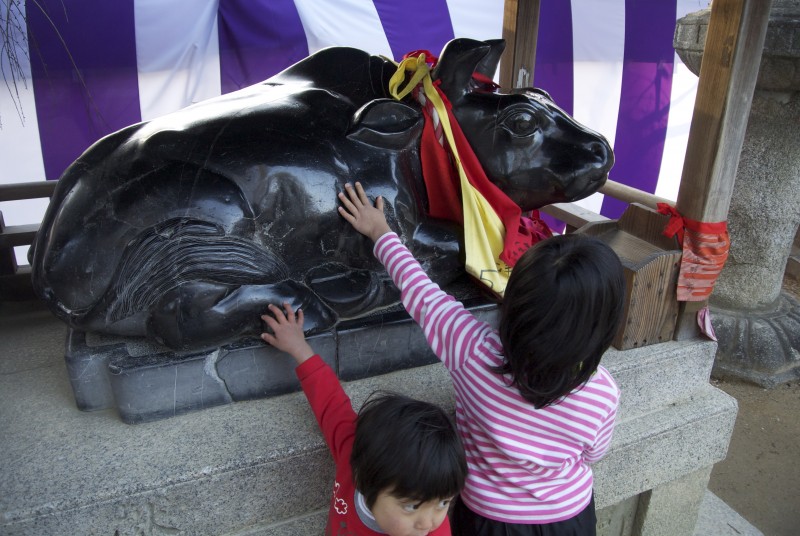
Children stroke the ox at Kitano Tenmangu, a symbol of Sugawara no Michizane since according to tradition the animal pulling his funeral cart insisted on his burial place by refusing to move any further.
Sugawara no Michizane was a courtier who fell from grace and in so doing became Japan’s second most popular deity, known as Tenjin. How come? Writing in today’s Japan Times, Michael Hoffman relates the story in graphic fashion in his coverage of the Heian Period (794-1187):
Hanging scroll of Sugawara at a Tenmangu shrine
Power at the time, and throughout Heian, was wielded by a branch of the great Fujiwara family. Emperors, mere children, were almost always Fujiwara grandsons or sons-in-law; their abdication before coming of age was a matter of course; a Fujiwara “regent” ruled behind the scenes. The system was rocked by Emperor Uda, a rare adult and non-Fujiwara claimant to the throne who, determined to rule as well as reign, appointed Sugawara, the leading scholar of the day, a poet prodigiously learned in the Chinese classics, as his chief counselor.
The Fujiwaras were undone! Well, not quite. They could have murdered Sugawara; a vicious civil war could have erupted — but this is Heian, and nothing of the sort even threatened. Sugawara instead was falsely charged with treason and, tears his only resistance, packed off to exile in remote Kyushu, where he died of “a broken heart.”
The end? No. A series of disasters in the capital terrorized the Fujiwara into striving to placate the supposedly furious spirit of this docile, feckless man who in life had been putty in their hands. Promoted above mortality itself, Sugawara was made a deity — the god of literature and calligraphy, worshiped, Morris tells us, by more devotees down the ages than any other Japanese god except Hachiman — the god of war.
The deification of Sugawara thus owes itself to the notion of ‘hungry ghosts’, a concept imported from China to denote spirits who carry the unfulfilled desires of the living into the next life. In Taoism ‘hungry ghosts’ were said to occur when people had died unhappily or violently. Sugawara’s broken heart through being exiled from the shining imperial capital is clearly a case in point. The resentment he was presumed to have built up in life was expressed posthumously by his vengeful spirit, here related by Wikipedia:
In the years after his death, the capital city was struck by heavy rain and lightning, and his chief Fujiwara adversary and Emperor Daigo’s crown prince died, while fires caused by lightning and floods destroyed many of residences. The court drew the conclusion that the disturbances were caused by Michizane’s angry spirit. In order to placate him, the emperor restored all his offices, burned the official order of exile, and he was promoted to Senior Second Rank. Even this wasn’t enough, and 70 years later he was elevated to the post of prime minister, and he was deified as Tenjin-sama, which means “heavenly deity”. He became the patron god of calligraphy, of poetry and of those who suffer injustice.
The Japanese term for such hungry or angry spirits is onryō (or goryō for those from the aristocratic class). The earliest examples date back to the eighth century, and rituals were performed to pacify their spirit, both Buddhist and Shinto. Another way of calming angry spirits was to hold a festival (called goryo-e) and to put on various kinds of entertainment. The earliest record of such a festival is 863, and in Heian times a number of goryo gods were identified for whom annual festivals were held. Around Kyoto they still are, most notably at Shimogoryo Shrine where eight vengeful spirits are enshrined.
There are theories of religion that the origin of all supernatural belief lies in the deep desire of humans to think that death is not the end. The belief in the continuation of the human spirit is an immensely powerful force, and ancestral ties in Japan are particularly strong. For Lafcadio Hearn Japanese religion was not only fundamentally ancestral in essence, but the dead had such a grip on the national psyche that they were the real rulers of the country. Sugawara no Michizane’s continuing hold on the popular imagination might be considered a case in point.
***************
For more about Kitano Tenmangu, click here and here. For more about Sugawara and Dazaifu, click here.
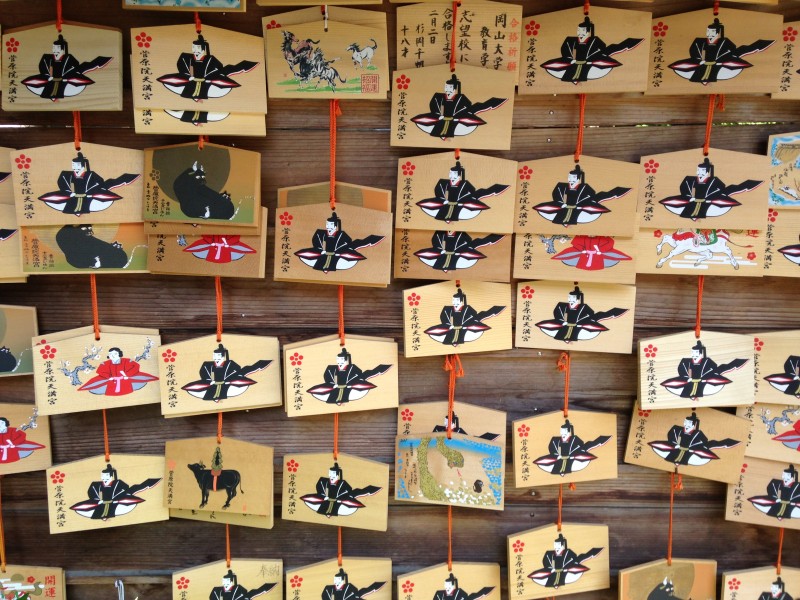
Sugiwara no Michizane ema at Kitano Tenmangu Shrine in Kyoto. His spirit is closely connected with scholarship and exam success, making the ema immensely popular at times of entrance exams.
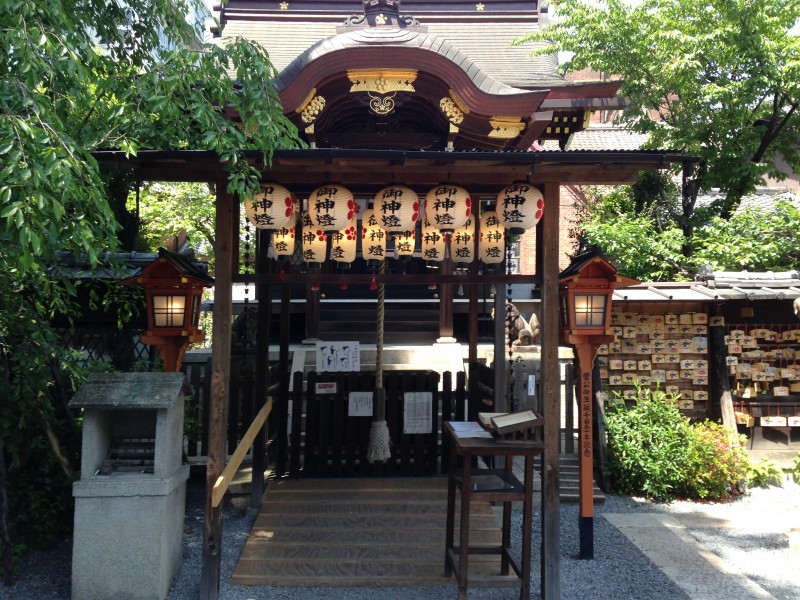
Shrine dedicated to Sugawara no Michizane next to Kyoto’s Gosho (Former Imperial Palace), which stands on the site of his father’s palace where he would have grown up.
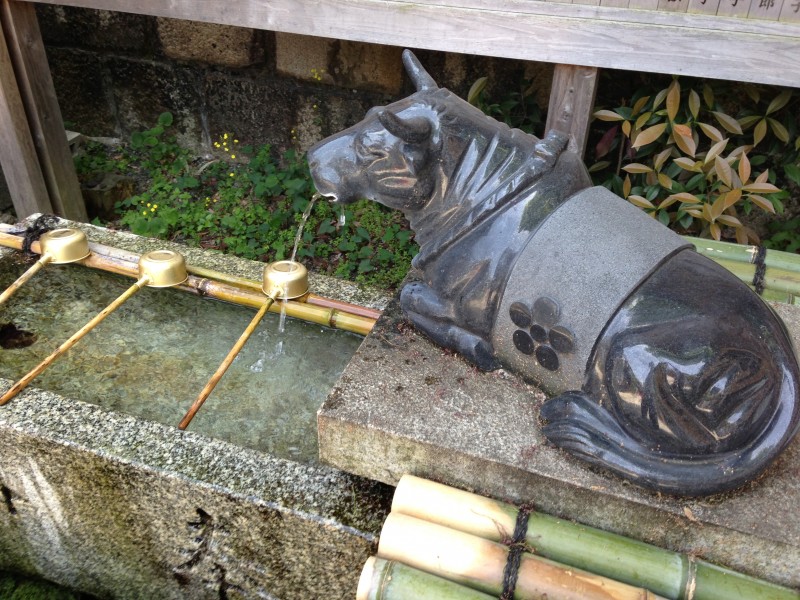
Water spout at the shrine above, memorialising the ox that determined his burial place at Dazaifu in Kyushu (Dazaifu Tenmangu marks the spot)
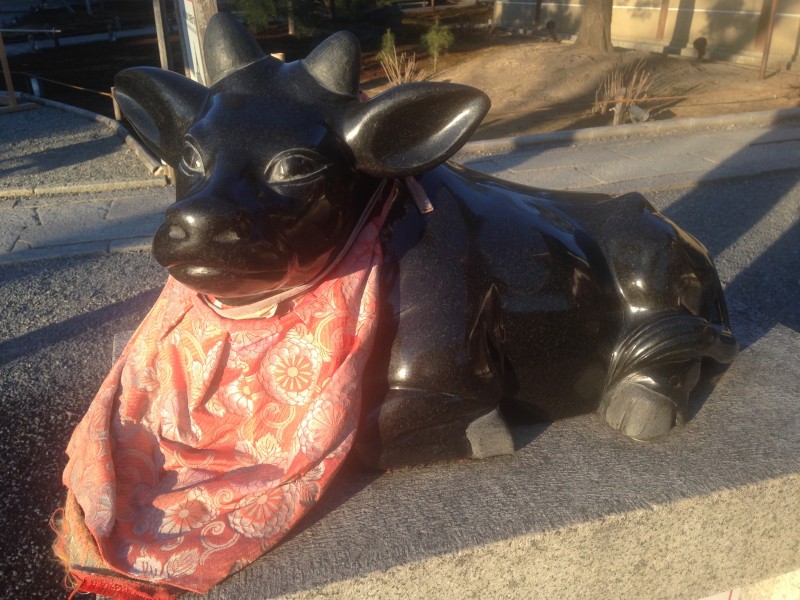
A stubborn ox bathing in the sunshine. The custom (as in the top picture) is to stroke it on the part of the body ailing you in order to heal or strengthen it. People often rub the head too for greater mental power.

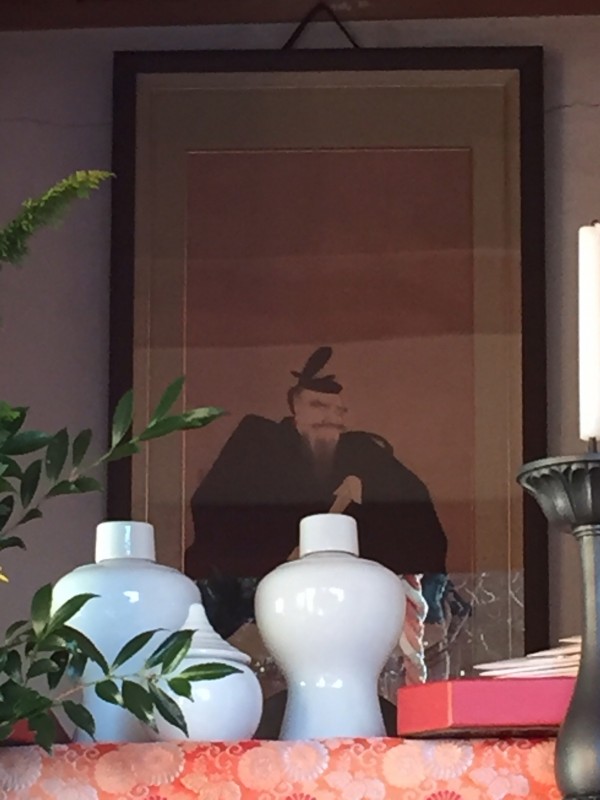
Thank you for these wonderful pages. I visited the Sugawara no Michizane shrine in Kyoto to pay my respects to this legendary poet and scholar so unjustly punished. The shrine was alive with students at exam-time, bearing offerings and praying for success in their exams. I own a print by Kiyochika, depicting Michizane on Kyushu, at the water’s edge, facing Kyoto across the sea to honor the Emperor despite his edict. A large rock on Michizane’s left, and a gnarled tree on his right. Beautiful triptych, my favorite print.
Thank you for writing in, and I was interested to learn of your print and your interest in Michizane. I’m looking forward to the next plum blossom season!